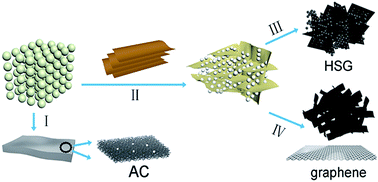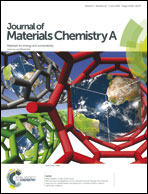Self-generating graphene and porous nanocarbon composites for capacitive energy storage†
Abstract
Herein we develop a new method in the synthesis of graphene nanosheets and porous nanocarbon composites. The method is based on the thermolysis of polymers and the reassembly of decomposed products, which are derived from all the solid materials including polyvinylidene fluoride, potassium hydroxide and graphite oxide. The resultant yields are composed of single-to-few graphene layers and micro-to-mesoporous structural nanocarbons with specific surface areas and inner pore volumes of 896–2724 m2 g−1 and 0.48–2.05 cm3 g−1, respectively. Symmetrical supercapacitors based on as-prepared electrode materials with organic and ionic liquid electrolytes show a specific capacitance of 165 and 185 F g−1, respectively, as well as high volumetric capacitance, good rate-capability, and excellent cycling stability. It is also noted that the variation of porous architectures of the carbon framework (i.e., high pore volume but similar surface area) results in different electrochemistry, suggesting the significance of porosity optimization for supercapacitor electrodes.

- This article is part of the themed collection: 2015 Journal of Materials Chemistry A Hot Papers

 Please wait while we load your content...
Please wait while we load your content...